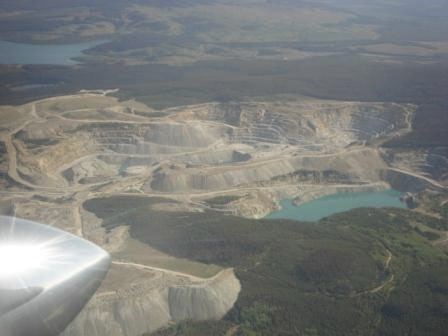B.C.’s Environmental Appeal Board (EAB) is scheduled to reconvene next month as the Tsilhqot’in Nation continues to challenge a three-year permit authorizing Gibraltar Mines to increase its untreated discharge of wastewater into the Fraser River.
Two days have been set aside in early April after five and a half days of electronic, oral hearings commenced Monday, March 15.
A spokesperson with the Environmental Appeal Board said Tuesday, March 22 that the board is continuing to review hundreds of documents in relation to this appeal.
A notice of appeal was filed by the Tsilhqot’in National Government (TNG) in April 2019 shortly after the TNG said it was notified by the Ministry of Environment and Climate Change Strategy of an amendment authorizing the Taseko-owned Gibraltar Mine to increase its discharge of mine effluent to the Fraser River by 50 per cent.
The TNG said it believes their laws and principles were not properly considered in the consultation and accommodation process and that the amended permit fails to protect the environment.
“You can’t be talking about reconciliation and the UN Declaration on the Rights of Indigenous People on one hand, and on the other giving out permits to poison the rivers that the salmon species and the sturgeon have a right to live in for thousands of years more,” Tl’esqox Chief Francis Laceese told Black Press Media.
In 2020 ?Esdilagh First Nation adopted Elhdaqox Dechen Ts’edilhtan (Sturgeon River Law), their own Indigenous law which requires that the river be protected from degradation.
The Fraser River has never been compromised by the copper-molybdenum mine located north of Williams Lake, according to Taseko Mines Ltd. vice president of corporate affairs Brian Battison.
Taseko had initially sought to increase its permitted discharge of wastewater from the mine, which Battison said is not “effluent” and meets water quality standards except for sulphate and nitrate, nearly a year after a tailings dam failed near Likely in 2014 at the Imperial Metals Corp.’s Mount Polley.
Each year Gibraltar Mine accumulates roughly six million cubic metres of water predominantly from rainfall, snowmelt and groundwater, which cannot be stored indefinitely, Battison said, noting the mine has been discharging water into the Fraser River since 2009.
“This discharge to the Fraser has been monitored weekly for some 11 years now as required by provincial and federal regulations, and there have been no negative effects on the river whatsoever — no impact on aquatic life, or fish, or on anything else,” he added.
“The current discharge rate represents a tiny amount of water — less than 1/100th of 1 percent of the flow volume down the river.”
On-site water treatment options are being examined to reduce the amount of sulphate and nitrate, which Battison said is undetectable within 100 metres of the discharged water entering the Fraser River.
Laceese is not sure how much of a difference a water treatment plant would make and said the TNG would remain opposed to any discharge from a mine into the Fraser River, which supplies one of their most significant food source —salmon.
The hearing is set to commence at 9 a.m. Wednesday, April 7 and Thursday, April 8.



